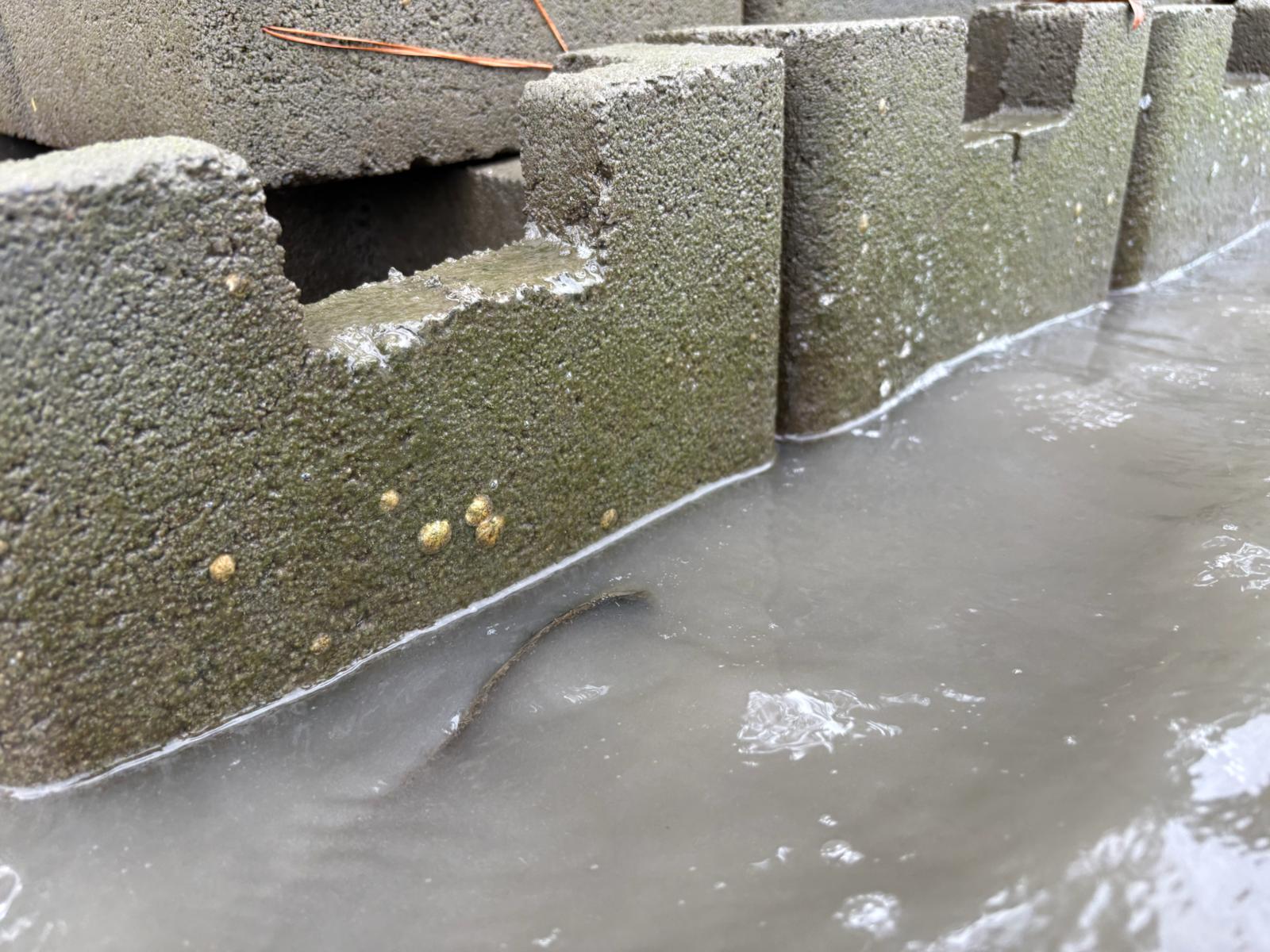
By Mary Reid Barrow
LRNow had not even finished building an oyster castle shoreline on the Lynnhaven River when baby oysters settled on the waterside castles.
Within three weeks of putting the concrete and crushed oyster shell castles in place to protect the shoreline, little spat, as baby oysters are called, were attached to the castles. Oyster castles create a hard base on which young oysters can grow.
In late spring as the water warms up, male and female oysters release their sperm and eggs into the water. When the two meet up they become oyster larvae looking for that hard-surfaced home.
“From the looks of these oyster castles, we are hoping it will be a good year for oyster settlement!” Brent James, LRNow’s oyster restoration manager, said.
Oyster castles provide an ideal artificial surface for baby spat growth. Within a couple of years, they will be filtering pollutants from the water and every day, bringing life to this new living shoreline!

Not long ago, I took some photos of what I thought was a black swallowtail butterfly nectaring on the phlox. I have fennel, a host plant for black swallowtail caterpillars, so I often see the butterflies in the garden.
But when I looked at the photos I realized I was probably wrong and that it was a spicebush swallowtail, a very similar butterfly but very different in what it prefers as a host plant.
Along with spicebush and a few other trees, sassafras trees are host plants for the spicebush swallowtail. I have a little group of sassafras in the yard.
I posted my dilemma on my Facebook page and thanks to several folks who confirmed my thinking, including Karen McCurdy, co-president of the Butterfly Society of Virginia.
Every day now, I scan the underside of my sassafras leaves looking for egg and the tiny caterpillars that look like bird droppings.
As they grow, those little droppings develop into just about the cutest caterpillars you’ve ever seen–bright green with yellow accents and really big eye spots that give them a look of constant surprise!
Their real eyes are under their bodies where their mouth is. They munch on the tree leaves and often roll up in a leaf to sleep off their meal and stay safe.
Robert Brown, who led LRNow’s osprey walk in June, reported that he saw his first ospreys heading south over the ocean when he and his wife Laney were on a walk along the boardwalk last week.
“They were diving for fish close to shore and seemed to be having good success,” Robert wrote, “but the glare was harsh, and it was difficult to see them once they were in the air above the horizon.
“Then it was clear that they were headed to shore for the nearest pine tree for breakfast!!” he said.
According to our local raptor expert Reese Lukei, the birds were most likely from our Chesapeake Bay area. Later migrating ospreys are from further north since their breeding season is later in the year.